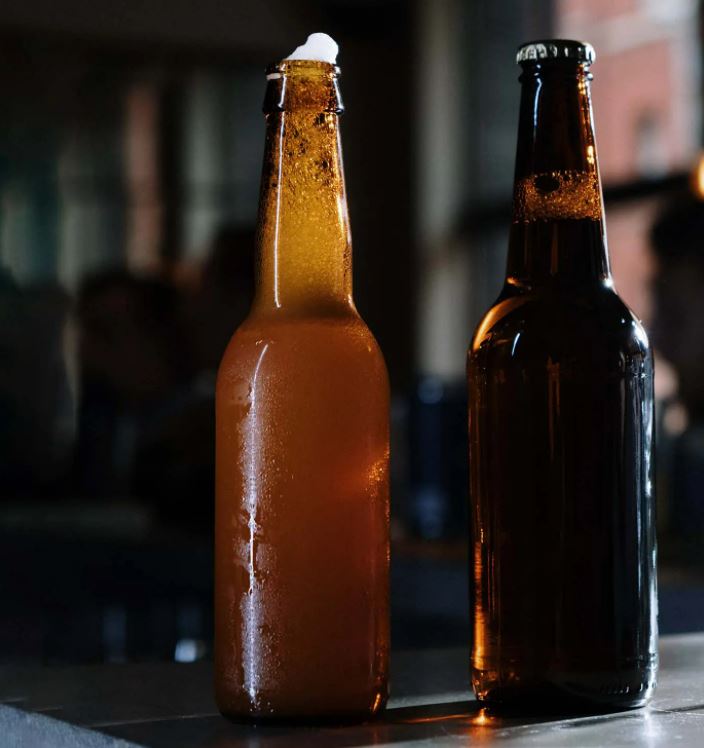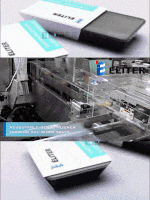Packaging for bottles: what should we take into account?
2023-01-22
Bottles can be very fragile, especially glass or crystal bottles, which can easily break with the slightest blow, hence the importance of bottle packaging when transporting or storing them safely.

There are different types of packaging for bottles, but not all of them are equally effective or offer the same protection, especially if they are going to be used for wine, liquor, beer, etc. bottles, which are usually made of glass.
Among all of them, the cardboard boxes for bottles stand out as the best packaging, since these are designed specifically for the transport of bottles, they are very resistant and will offer the protection they need.
That said, today at Cajeando we are going to focus on packaging for glass, plastic, metal bottles, etc., we are going to help you choose the boxes to transport bottles, and go over all the aspects that you should take into account to guarantee their protection and to avoid any risk during transport. So if you have a drinks or food business and in your day to day you have to keep bottles, pay attention and take note because this interests you.
Tips for choosing the packaging for bottles, and getting it right
Bottle material
The first thing to take into account is the material of the bottle, since this will mark the quality that the cardboard of the boxes should have to send bottles, the thickness, the need to insert interior dividers, or what is the most suitable format for the box.
Obviously, the more fragile the material, the better the packaging boxes for bottles should be, it being important to use interior dividers.
Bottle size and shape
On the other hand, the size and shape of the bottles will mark the measurements of bottle boxes, since you will not need the same boxes for the transport of 20cl bottles, as for wine or liquor bottles.
It is important that the boxes for wrapping bottles fit the container, and that they are neither too big, nor too small. If they are very large, the boxes could end up crushed, while if they are very small, they could break the bottles inside.
Prevent the bottles from going loose
Once we are clear about the material and the size of the bottles, we must avoid that they go loose inside the boxes, since otherwise they will collide with each other during transport, and most likely they will end up breaking, especially if they are made of glass or crystal.
For this, the separators will be your best allies, since they will avoid contact between bottles, and will guarantee the perfect fixation of each one.
Another less recommended option is to wrap the bottles in a padded material and fill in the gaps that remain empty inside the box.
Packaging trends
Custom product packaging is fundamental in the beer business. Customers are inherently attracted to packaging that is creative and visually appealing. Breweries can showcase their distinct and unique personalities for their brand through innovative packaging, which helps them stand out in this competitive business. In addition, purchases are motivated by customer loyalty and affinity for the label and the brand. The correct packaging distinguishes the craft beer that is sold from the beer that remains on the shelf. While craft brewers often compete on taste and price, they must also address consumers’ aesthetic preferences through branding, packaging, and marketing.
Why are glass bottles used?
We are all aware that beer can be packaged in various ways, from the traditional glass bottle to the most cost-effective aluminum can. Therefore, why do so many brewers choose glass bottles as their main packaging material?
In general, the glass bottle packaging indicates a higher quality product. This is the reason why many microbreweries use glass bottles – it gives buyers the impression that their beers will be superior to ordinary canned drinks. It offers several branding options for anyone looking to differentiate themselves and compete with larger companies, which often pack their beer in aluminum cans to save money.
Many customers believe that glass containers are more attractive than aluminum cans and other alternatives. In addition, since glass can be recycled indefinitely, it attracts the growing desire for sustainable packaging solutions.
The importance of aesthetically attractive beer bottle packaging
There is no doubt that proper beer packaging is fundamental to the success of the brand. In a highly competitive industry, staying up-to-date on packaging and marketing trends is essential to give your beverage the edge needed to achieve that critical conversion – after all, packaging is the last chance for a brand to communicate its message and visually engage customers. Packaging is also essential in the beer sector: it serves as an essential protective measure that safeguards valuable cargo during transport. Cans and bottles are especially sensitive to pressure and impacts, so proper packaging prevents damage that could eventually result in a loss of product value and profit.
Whether your beer is transported in your vehicle, by courier or on bulk pallets, the mode of transport and stacking of your beer has a significant impact on the way your packaging is designed and engineered. It includes the grade of the material, the board and the dividers used to ensure optimal strength and suitability for the respective conditions. A frequent and inevitable consequence of rapid rotation in a canning or bottling production line is that cans and bottles are packed still wet. In these humid circumstances, a well-designed packaging takes additional measures, such as having a Kraft inner liner and a waste-based ribbing to hold and protect the boxes.
Why are brown beer bottles preferred?
Initially, glass was chosen to contain the beer, as it was the best material to preserve the liquid for extended periods. However, it took some time to realize that clear glass was not the way to go with beer – in fact, it became a source of controversy. Transparent beer bottles exposed to the sun immediately developed a sour taste. The aroma and taste of the beer matched those of a skunk.
After an extensive study on why beer stored in glass bottles degraded so quickly, scientists discovered that ultraviolet (UV) light from the sun was causing the deterioration of hop acids. This event caused a chemical reaction that created a compound remarkably similar to the skunk spray. Therefore, the term “skunk beer” was very accurate for terrible beer. The phrase “lightstruck” is used in the brewing business to describe beer that has gone bad. However, technological improvements in the beer business have resulted in the creation of light-stable hops that prevent this chemical reaction from occurring when exposed to solar radiation.
Before the advances of today’s beer bottling industry, producers had to come up with a method to prevent UV rays from damaging their batches. They observed that the use of dark beer bottles protected the beer from ultraviolet radiation, similar to how sunglasses protect human vision. Many of the most prominent brewers use brown beer bottles today.
Customize your beer bottles
If you are brewing large batches of homemade beer to present to friends and family, there is no reason why you can’t customize them. Choose the bottle of beer that you like the most. You can use the classic brown bottle for authenticity or any bottle that appeals to you.
Create custom labels for your beer that include the name of the beer, your name, the brewing date and any other details you like. Personalizing your beer bottles is a great way to stand out at your next party or family gathering. And if a lot of your friends like to drink craft beer, organize a beer tasting party.




